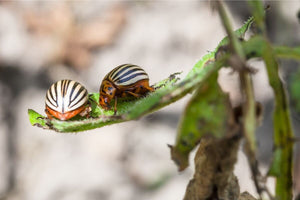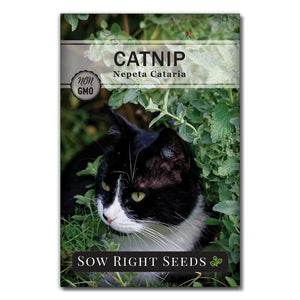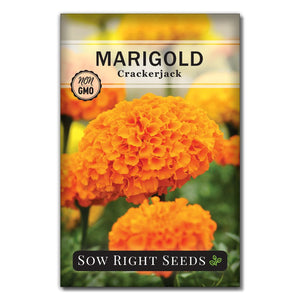Cucumber Beetles: How to Identify and Protect Your Garden from These Pesky Pests
PestsCucumber beetles are the reason that so much pesticide is used on melons and other cucurbit crops. But it doesn’t have to be that way in your home garden. These effective methods will help you control the cucumber beetle population so you can enjoy the fruits of your labor.

Identifying Cucumber Beetles
There are two species of cucumber beetles you might encounter in your garden: the striped cucumber beetle and the spotted cucumber beetle.
Striped Cucumber Beetle:
Appearance: Striped cucumber beetles have three distinct black stripes running down their yellowish-green bodies. They have black heads and abdomens, with an orangish area (prothorax) between the head and the body. Adult beetles are about 1/3 inch long.
Eggs: Both species lay pale orangish-yellow eggs, but their habits differ. Striped beetles lay their eggs on cucurbit plants like cucumbers, melons, and squash.
Seasonal Behavior: Striped beetles can survive winter by hiding under plant debris.
Feeding Habits: Striped beetles prefer cucurbit plants.
Spotted Cucumber Beetle:
Appearance: Spotted cucumber beetles are also yellowish-green but are marked with 12 black spots on their bodies. They are similar in size to the striped beetles.
Eggs: Spotted beetles lay their eggs on grass and pupate in the soil.
Seasonal Behavior: Spotted beetles don't survive the winter in colder places like Minnesota and other northern climates. Instead, they migrate from the southern U.S.
Feeding Habits: Spotted beetles have a broader diet and will feed on a variety of plants.
Both species of cucumber beetles can cause significant damage to your garden, but keep in mind that other pests like squash bugs and squash vine borers can also cause leaves to wilt. Pest identification can help you choose the most effective protective measures.

Cucumber Beetle Life Cycle
Cucumber beetles start their journey by overwintering as adults under plant debris. When spring rolls around, and temperatures hit about 70ºF, they emerge ready to wreak havoc on your garden.
The adult cucumber beetles will start feasting on whatever they can find. They prefer cucurbits but will eat whatever flowering crops are available. The female beetles lay oval, yellow to orange eggs. The striped cucumber beetles lay their eggs on cucurbit plants, like cucumbers, melons, and squash. In contrast, the spotted beetles prefer laying their eggs on grass and other veggies. These eggs hatch in a week or two, depending on the species.
Once hatched, out come tiny white larvae or worms with dark heads. These larvae are about 1/3 to 1/2 inch long, with three pairs of brown legs. They spend the next 2 to 6 weeks feeding on plant roots and underground stems. This feeding can hurt your plants, causing stunting or even death.
After their feeding frenzy, the larvae pupate in the soil. Depending on the weather and where you are, they emerge as adults from April to mid-July.
The entire cycle from egg to adult takes about 40 to 60 days. Depending on the location, these beetles can produce 2 to 3 generations each year. In cooler climates, there are typically two generations per year, while in warmer climates, there can be up to three.
Adult cucumber beetles do the most damage. They initially feed on flowering plants like dandelions but soon move on to their favorite host crops. They can fly up to 500 miles in high-altitude air currents, making them pretty tough to keep away!

The Trouble With Cucumber Beetles
Why are cucumber beetles a pest that needs to be controlled? Cucumber beetles are notorious pests for several reasons, making it crucial to control them in your garden.
1. Spread Disease:
- Bacterial Wilt: Cucumber beetles carry a bacterium called Erwinia tracheiphila, which causes bacterial wilt. This disease is especially harmful to cantaloupe and cucumber plants (watermelon is not affected).
- Squash Mosaic Virus: Beetles also spread this virus, further damaging your plants.
- The longer beetles feed on your plants, especially later in the season, the higher the chance they will infect them with these diseases. Bacterial wilt is particularly problematic because it is fatal and can't be fixed.
2. Kill Plants:
- Young Plants: Beetle larvae feed on the roots, which can kill young plants before they have a chance to grow.
- Interfere with Pollination: Adults often gather in blossoms, eating them and interfering with pollination. This can significantly reduce your crop yield.
3. Damage to Fruits:
- Striped cucumber beetles feed on the fruits themselves, causing them to rot or become deformed. This not only affects the health of your plants but also makes the fruits unmarketable.

Preventing Cucumber Beetle Damage
Cucumber beetles can devastate your garden by spreading fatal diseases, killing young plants, interfering with pollination, and damaging fruits. Controlling these pests is essential to maintaining a healthy and productive garden. Wondering how to keep cucumber beetles from destroying your crops? Here are some effective strategies:
1. Rotate Crops
Regularly change the location of your cucurbit plants in the garden. Plant non-host plants in their place. This makes it harder for beetles to find and infest your crops year after year.
2. Floating Row Covers
Use floating row covers to protect your plants from beetles. Just be sure to remove them when it's time for bees to pollinate your melons and cucumbers.
3. Start Seeds Indoors
Start your seeds indoors to grow large, healthy seedlings before transplanting them outside. Small seedlings with fewer than three true leaves are more vulnerable to damage.
4. Intercropping
Plant your cucurbits alongside beneficial companion plants like radish, nasturtium, buckwheat, cowpea, and sweet clover. Studies have shown this can reduce cucumber beetle populations.
5. Hand Picking
Manually remove beetles by handpicking them, especially in the morning when they move slower. Check carefully, as cucumber beetles like to hide in flowers and unfurled new growth. Drop cucumber beetles into a container of water with a bit of dish soap so they can’t get out.
6. Weeding
If you need another motivating reason to keep your garden weed-free, this is it. Weeds can be potential hosts for adult cucumber beetles, allowing them to keep feasting and laying eggs. Make weeding easier with the right tools.
7. Straw Mulch
Use straw mulch to slow down beetles and provide habitat for beneficial predators like wolf spiders. Wolf spiders, ground beetles, and bats will all eat cucumber beetles. Other beneficial predators are tachinid flies and parasitic wasps, which can parasitize striped cucumber beetles.
8. Rich Organic Soil
Maintain healthy soil with plenty of organic matter. This encourages a diverse population of beneficial microorganisms that can help control pests. Rich soil also allows healthy plant growth, which makes plants more pest and disease-resistant.
9. Plant Resistant Varieties
Choose plant varieties that are less attractive to beetles. For example, 'Crimson Sweet' watermelon and 'Beit Alpha' cucumbers are less likely to be attacked. 'Beit Alpha' cucumbers also don’t need pollinators, so you can keep them covered with row covers.
10. Delay Planting
Delay planting your cucurbits if you can still get a harvest before the first frost. Starting seeds indoors can give you a head start.
11. Avoid Scent Traps
Don’t use traps that lure beetles in with scent. These traps will attract more beetles to your garden.
12. Keep Plants Stress-Free
Healthy, well-watered plants are less stressed and less likely to attract beetles. Keep your plants well-watered and ensure they get the right amount of nutrients.
It’s very likely that you’ll see cucumber beetles in your garden. But it doesn’t have to mean the end of your harvest. Start checking for cucumber beetles as soon as you plant cucurbits, and continue checking so you can act quickly and effectively.
By using these strategies, you can help protect your garden from cucumber beetle damage and ensure a healthy, productive harvest.
Written by Beverly Laudie










Leave a comment